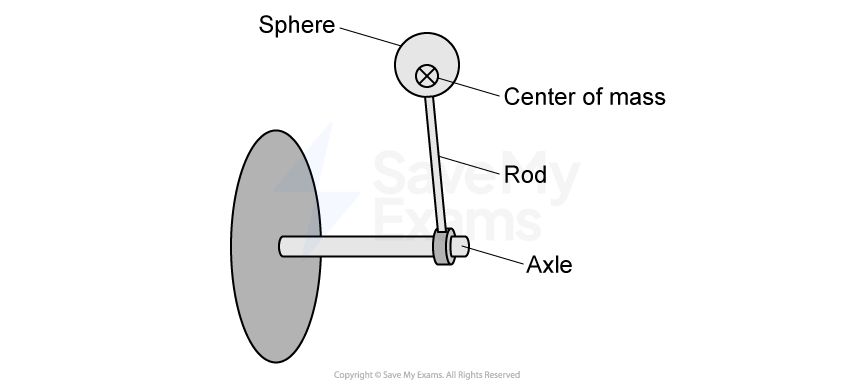
Figure 1
A rod with a sphere attached to the end is connected to a horizontal mounted axle and carefully balanced so that it rests in a position vertically upward from the axle. The center of mass of the rod sphere system is indicated with a , as shown in Figure 1. The sphere is lightly tapped, and the rod-sphere system rotates clockwise with negligible friction about the axle due to the gravitational force.
A student takes a video of the rod rotating from the vertically upward position to the vertically downward position. Figure 2 shows five frames (still shots) that the student selected from the video.
Note: these frames are not equally spaced apart in time.

Figure 2
In which of the frames of the video in Figure 2 is the rotational kinetic energy of the rod-sphere system the greatest? Justify your answer using qualitative reasoning beyond referencing equations.

Figure 3
The rod-sphere system has mass and length
, and the center of mass is located a distance
from the axle, as shown in Figure 3.
Derive an expression for the change in kinetic energy of the rod-sphere-Earth system from the moment shown in Frame A to the moment shown in Frame E. Express your answer in terms of ,
, and fundamental constants, as appropriate. Begin your derivation by writing a fundamental physics principle or an equation from the reference information.
A student makes the following claim:
"The rod and sphere gain kinetic energy, even if the Earth is not included in the system".
Justify whether or not the student's claim is correct by referring to the equation you derived in part b).
Did this page help you?








